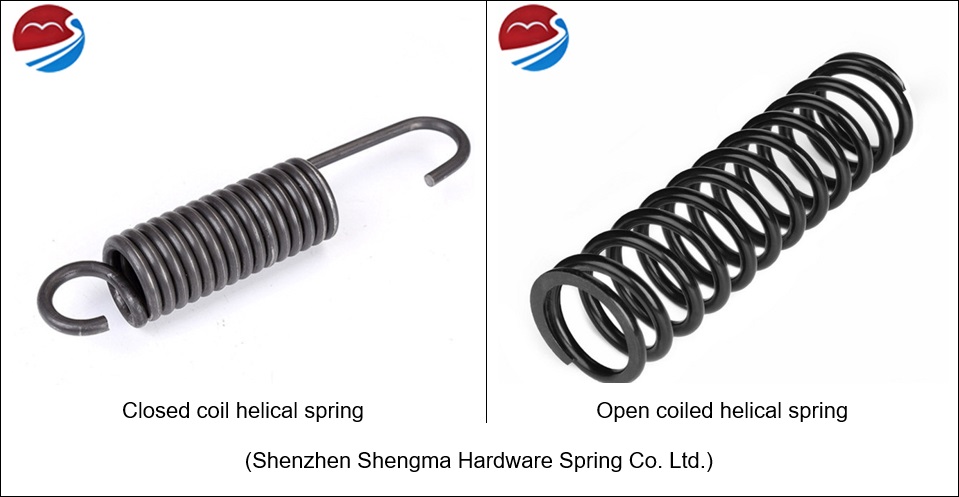Spring is one elastic machine element that can absorb energy by undergoing significant amount of elastic deformation under the action of external loading and can subsequently release that energy when external load is removed. Springs are basically of two types—helical spring and leaf spring. Helical springs are made by bending wires of constant diameter in the form of a helix. Such springs are commonly used for storing and releasing energy as well as for absorbing shock and vibration. Based on the purpose, helical springs can be of different types, such as coil spring, torsion springs, etc. Coil springs can once again be classified into two groups—extension spring and compression spring. As the name suggests, a compression spring is employed when the spring is subjected to external compressive loading and is thus required to shorten its length. Contrary to this, an extension spring is used where it is expected to experience external tensile forces.
Based on helical characteristics of coil spring, it can once again be categorized as closed coil and open coil. In a closed coil helical spring, spring wire is bent in such a way that there exists no noticeable gap between two adjacent coils. Basically the coils are wound so closely that two adjacent coils touch each other. Helix angle is usually very small (typically below 10º) in such springs. However, it requires minimum longitudinal space for same stiffness requirement. Accordingly, it can provide a compact design, which is often required in several machine units. Closed coil springs are basically extension springs that are meant to undergo axial elongation under the action of tensile loading. On the other hand, in an open coil helical spring, sufficient gap is maintained between two adjacent coils. Thus they offer significant amount of compression (as well as extension if required) without failure or jamming. Such springs are termed as compression springs. Here helix angle is also comparatively larger. Under certain circumstances, compression springs are more flexible. Various similarities and differences between closed coil helical spring and open coil helical spring are given below in table form.

Similarities between closed coil and open coil helical spring
- Both of them are helical springs. Thus they are used only when springs are expected to experience external axial (tensile or compressive) loading.
- None of them can be employed under torsional loading. Torsional helical springs can be used in such cases.
- Both can store sufficient energy by undergoing elastic deformation. It can also release the same energy by reverting back to the original shape once external loading is removed. In fact, this is the basic characteristics of every spring.
Differences between closed coil and open coil helical spring
| Closed Coil Helical Spring | Open Coil Helical Spring |
|---|---|
| Helix angle of closed coil helical spring is below 10º. | Helix angle of open coil helical spring is more than 10º. |
| Here the spring coils are wounded in such a way that there exists almost no gap between two adjacent coils. So adjacent coils touch each other. | Here sufficient gap is maintained between two adjacent coils as coils are not wound tightly. |
| Pitch of the spring coil is smaller as the helix angle is small. | It has longer pitch because of high helix angle. |
| It cannot deflect significantly in axial direction under axial torsion. | It can deflect in axial direction under axial torsion. |
| Under normal state, it requires minimum longitudinal space for a given stiffness requirement. | Open coil spring requires comparatively longer space for same stiffness requirement. |
References
- Strength of Materials by S. S. Rattan (Tata McGraw-Hill Publishing Company Limited).
- Strength of Materials: A Practical Approach by D. S. P. Rao (Universities Press).
- Introduction to Machine Design by V. B. Bhandari (McGraw Hill Education India Private Limited).